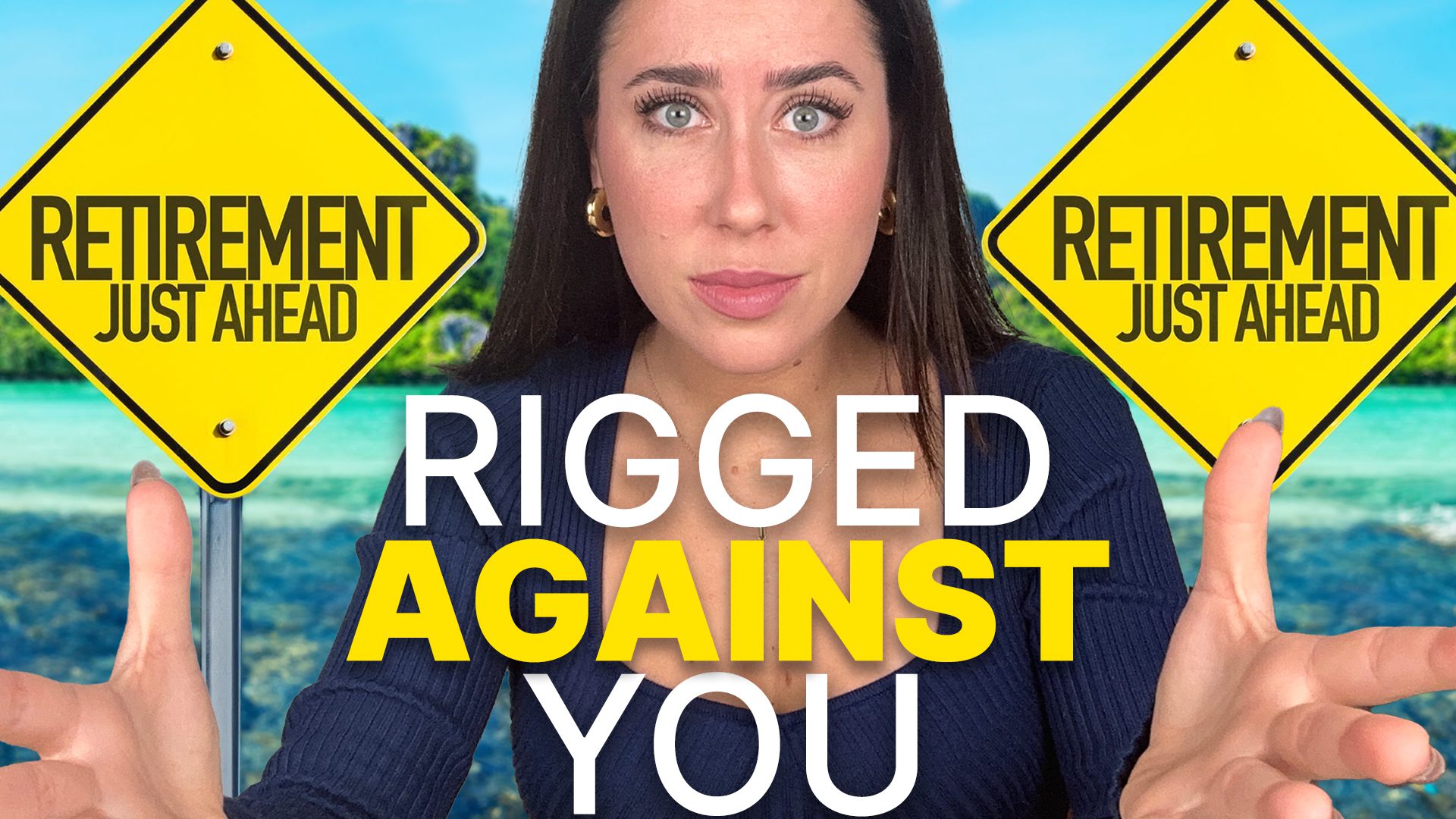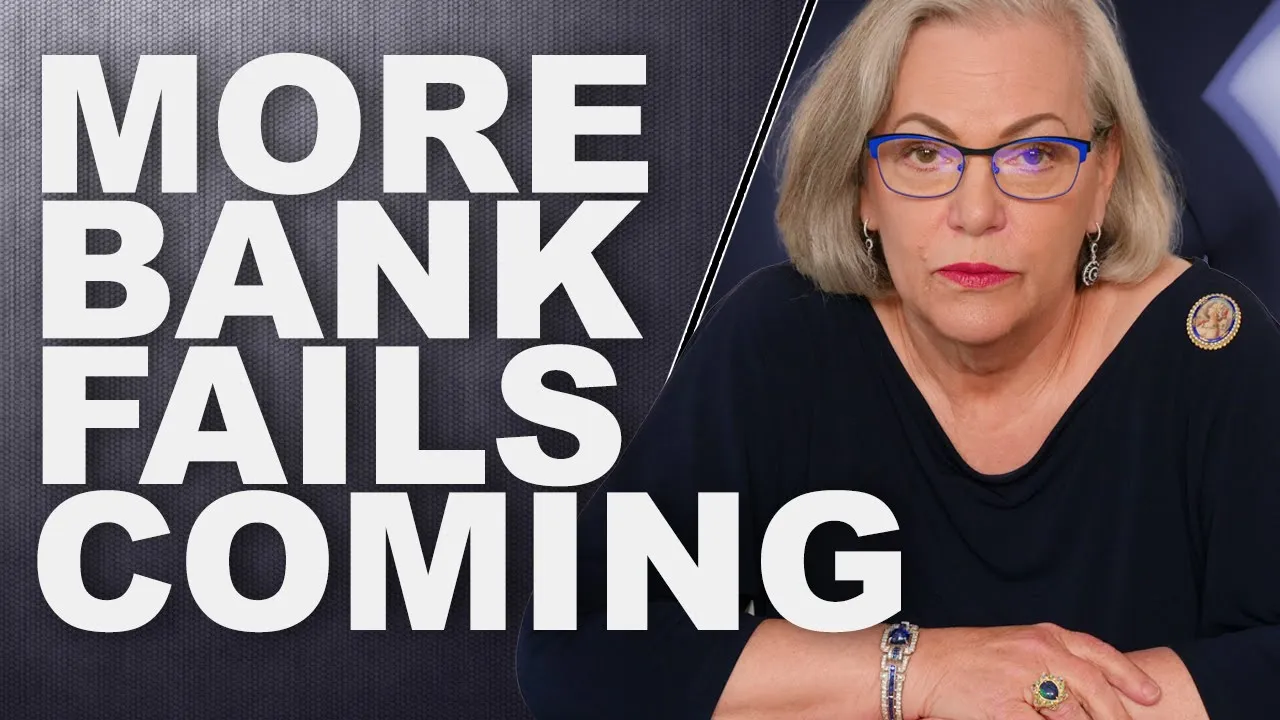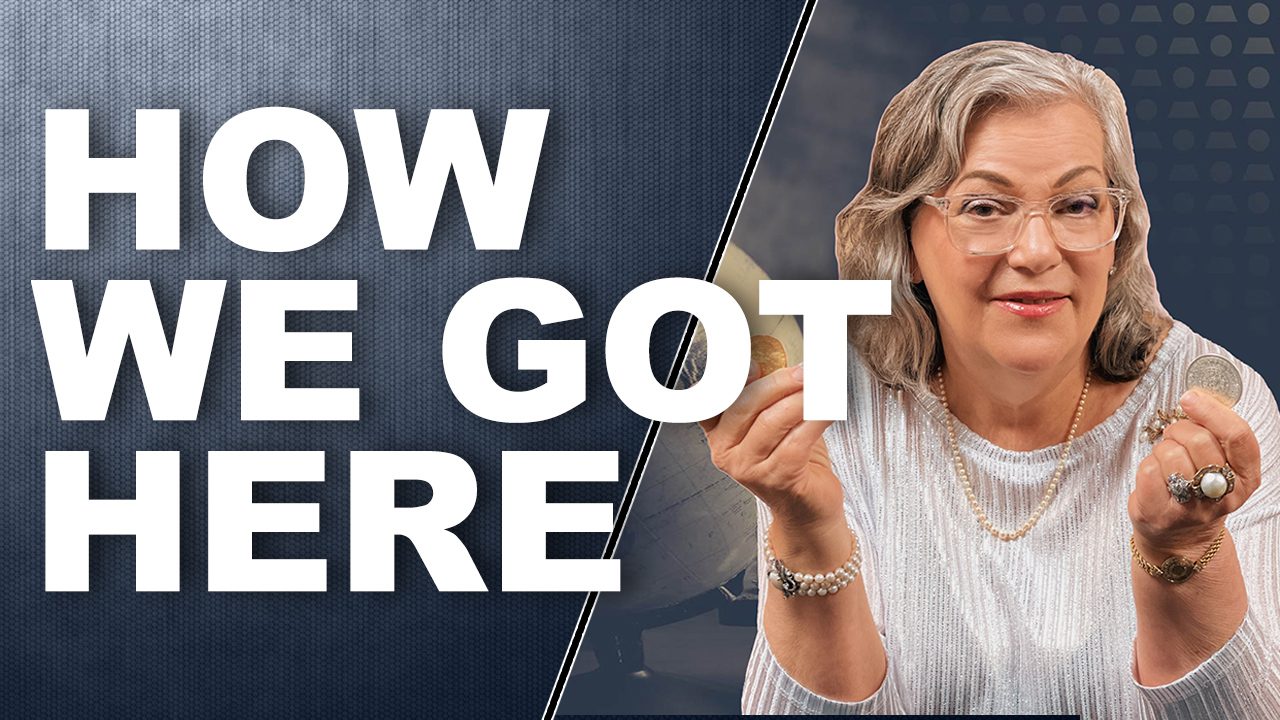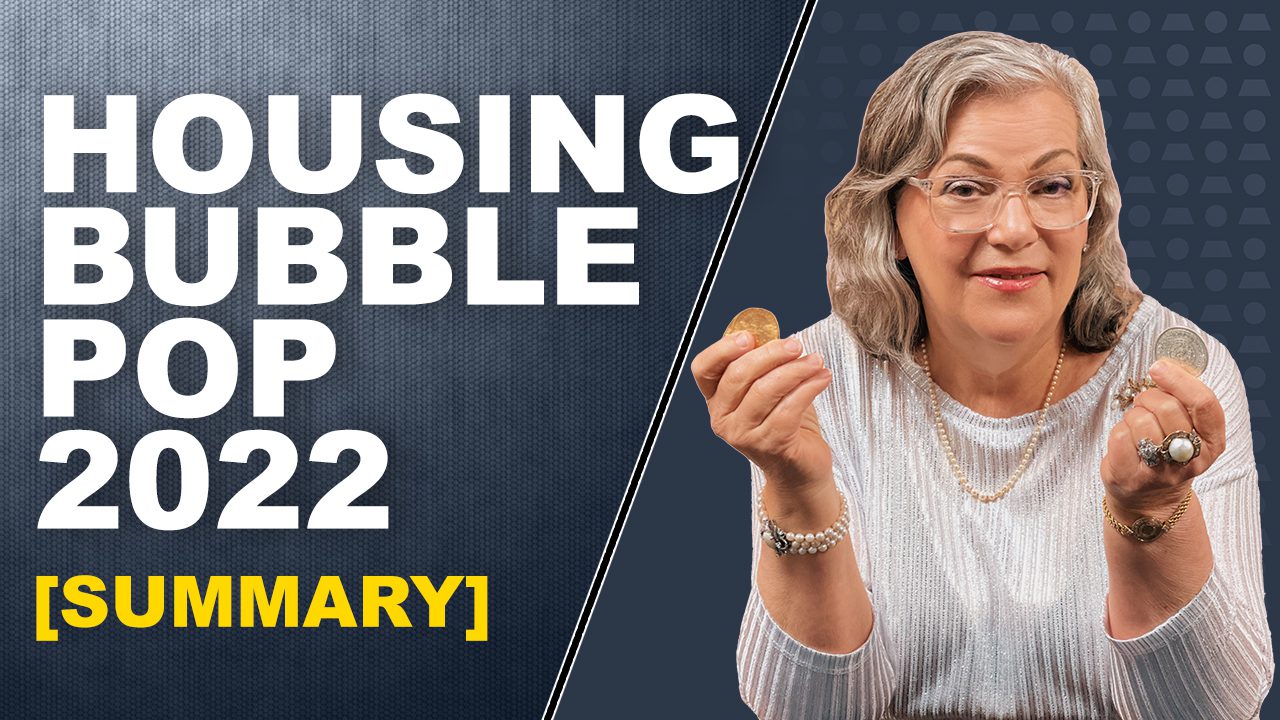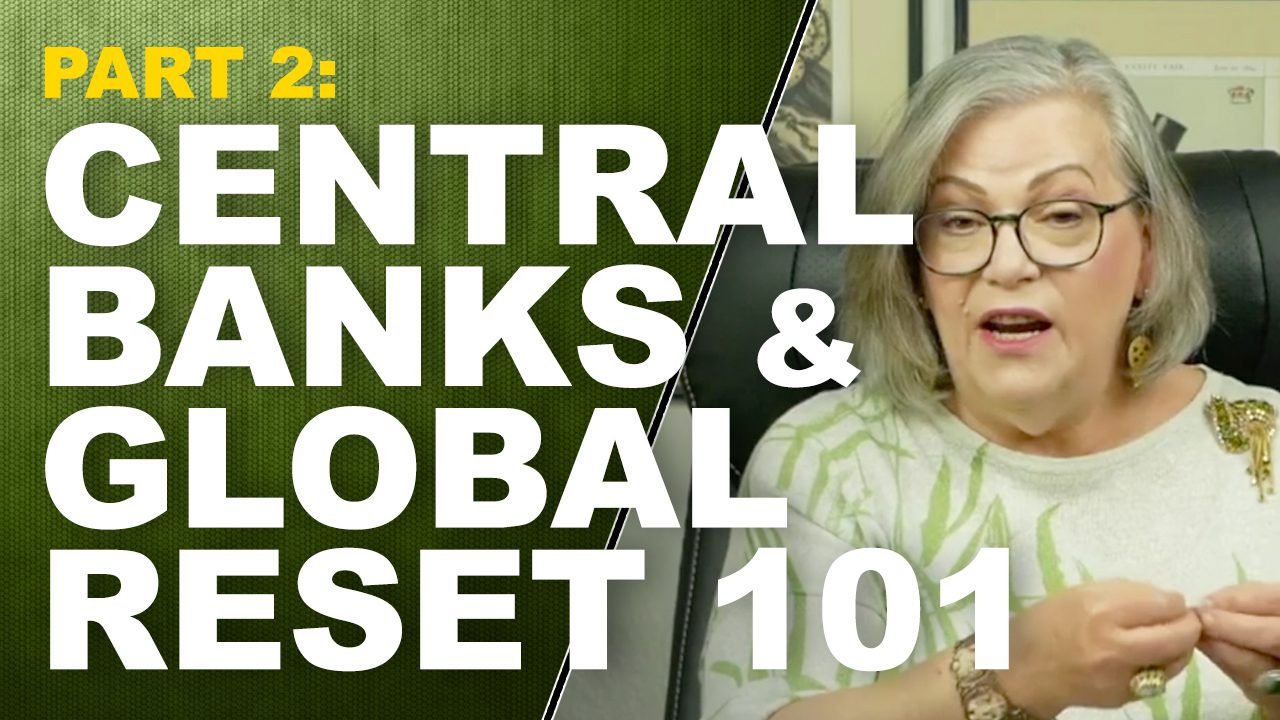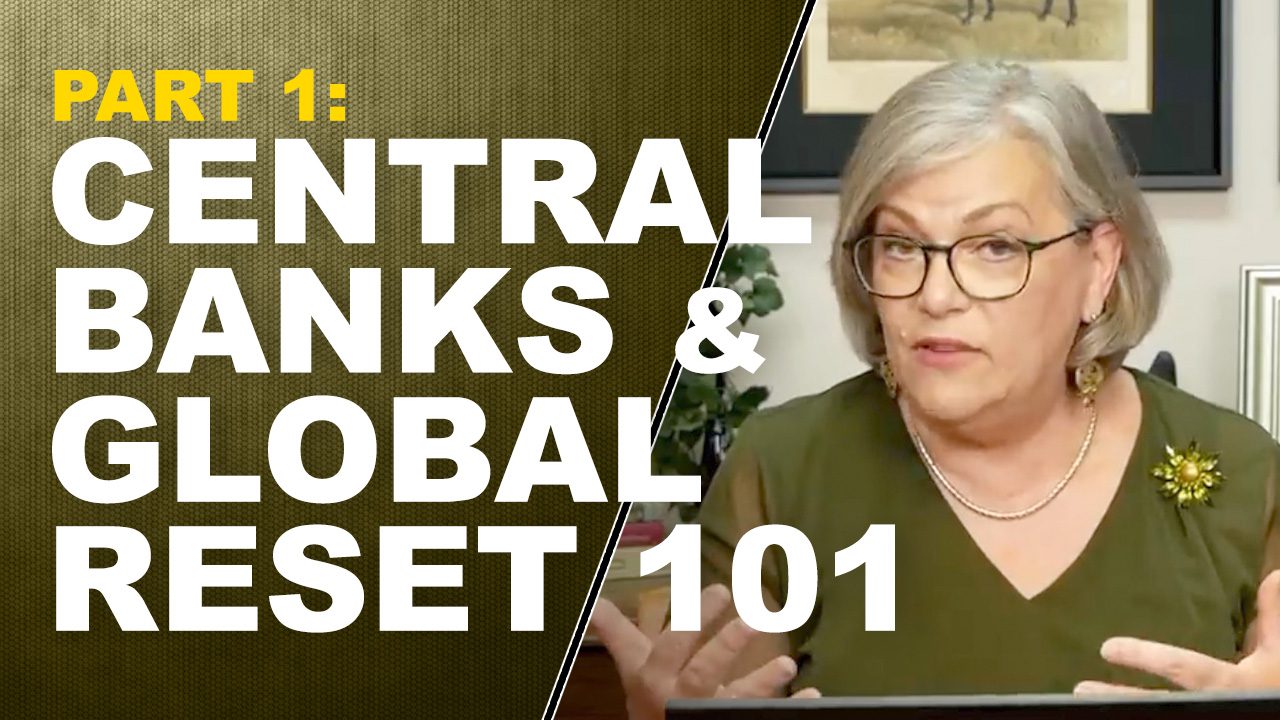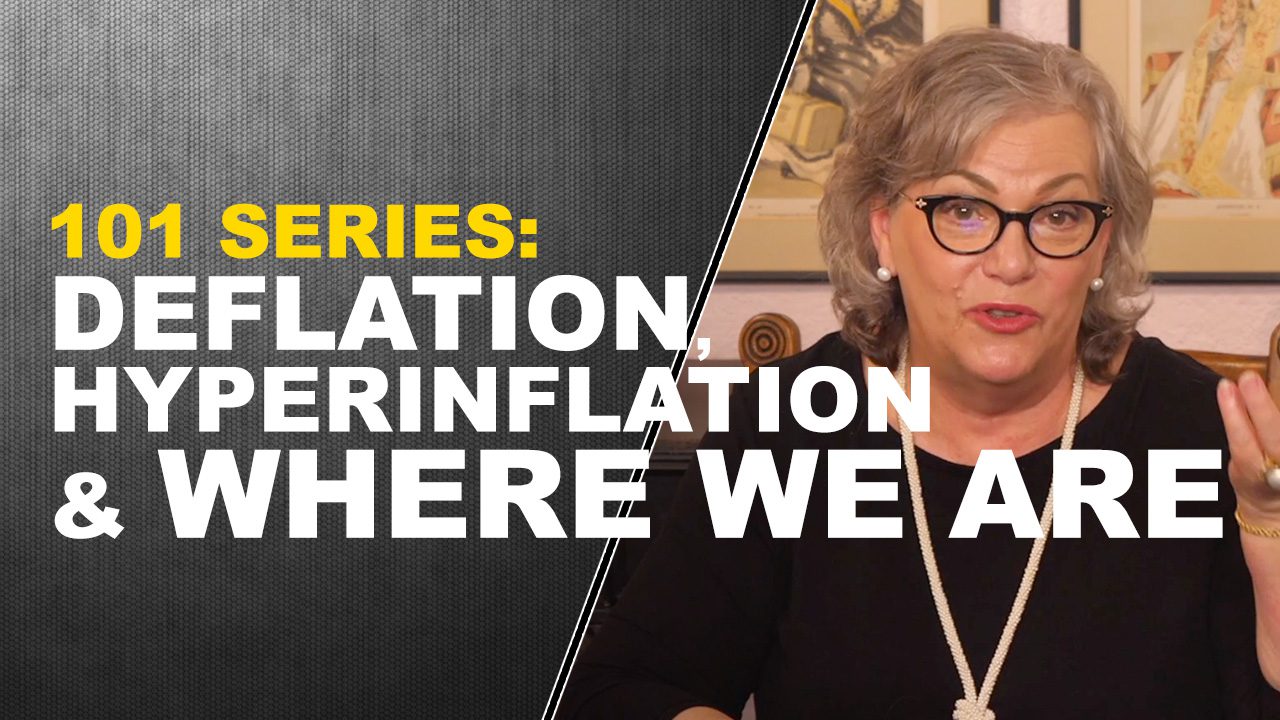Explaining Money To An 8-Year Old
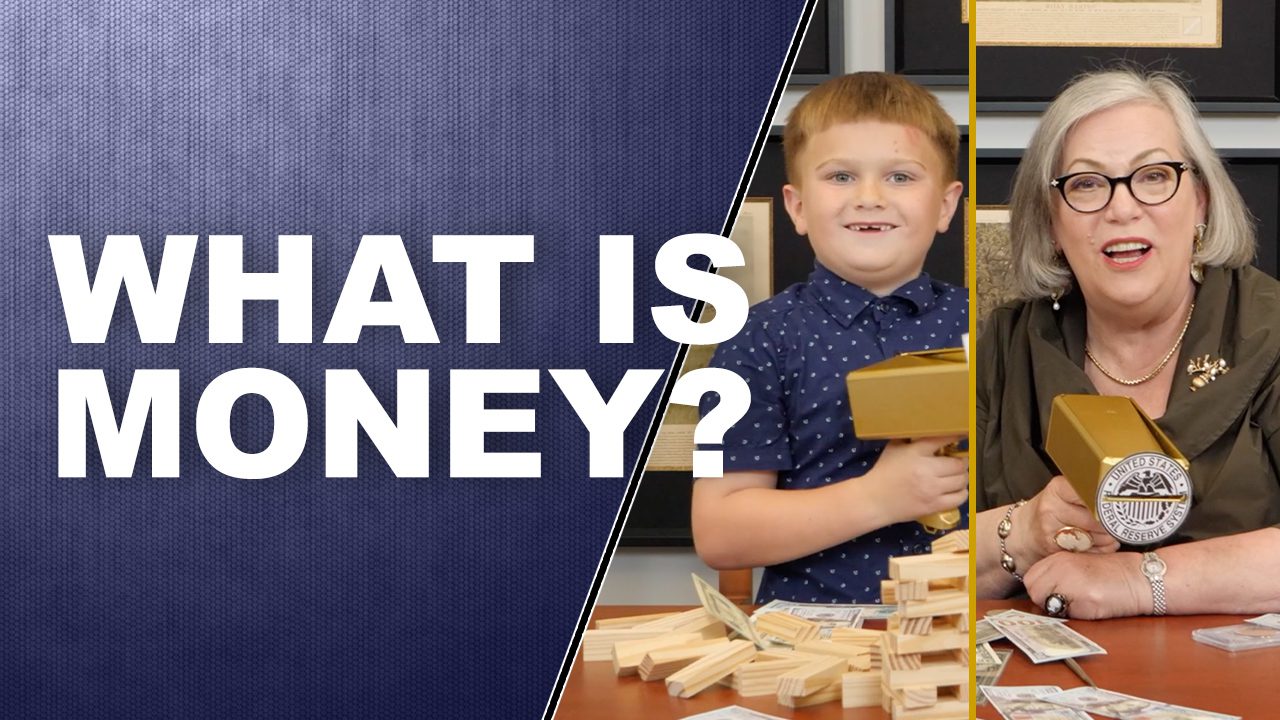
TRANSCRIPT FROM VIDEO:
Lynette Zang:
Yep, we’re recording.
Warner:
Hey my name’s Warner here with ITM Trading and here’s our host goo-gee.
Lynette Zang:
Hello everyone. I’m the Chief Market Analyst here at ITM Trading. Warner, will you please come and join me for this very special lesson that we’re going to have today? I will please have a seat right here and let’s move closer, cause I want you to be able to see everything okay. Because what we’re gonna talk about today is money. And you know, this is something that when you get older, you’re gonna work for, but right now your mom and dad have to work for money. And as you know, sometimes it’s a little bit hard because things are so expensive and there’s lots of inflation and also people try and save it.
Warner:
But as you, so aptly pointed out to me, how much value is there in this? Zero, well, pretty close 3 cents officially, according to the Federal Reserve, out of the original purchasing power of the dollar. So let’s talk a little bit about money and I want you to ask me any question that comes to your mind as we’re talking about it. Okay. Because as a society, we needed to be able to specialize. And so we needed money. So in a town you would have like a baker and a banker and an attorney and a dentist and a farmer. Right. But if we didn’t have money, then everybody would have to do absolutely everything. So they tried lots and lots of things over the years, even rice and shells, like when we go on vacation and we pick up shells on the beach. Yeah. Even shells were once used for money. But the only thing that actually has all of the qualifications to be money is gold and secondarily silver. So let me put the sounds of gold in your hand. Okay. And you tell me how that feels.
Warner:
I wouldn’t say heavy, but it’s, I’ve felt gold before and it’s very, it’s heavier than that material.
Lynette Zang:
Yes, that is true. In fact, nobody, even in a lab has been able to duplicate gold and so gold became the primary currency metal. But of course, if we’re on a gold standard and let’s say I’m the tax person and I come to you and I say, give me all your gold because I’m taxing you, would you do it happily if you worked really hard for it.
Warner:
Not at all, not wait, gimme that back.
Lynette Zang:
<Laugh> exactly. And so governments and central banks created what’s called Fiat money. And what that means is it’s government based money. So here is a $10 gold certificate, right? Mm-Hmm <affirmative> is that what it says right on there. And you can see that right there. Okay. So this, I gave you a $20 gold coin. This is a $10 gold coin. See, so you could as a citizen, walk into the bank with this and walk out of the bank with this. Nope. Not with that. Cuz that’s $20 20. Right. But with that you could walk out of the bank with that. Now, if you did that, if you didn’t like what the government was doing, what they would do as a citizen is you would go and you would pull the gold out of the system. And then the government couldn’t spend as much money. So they got us used to looking at this. Right. Mm-hmm <affirmative> and then they started to transition us to this. Now do these two bills. I know one’s at 10 and one’s at 20, but look at how much do they look a lot alike? No, I’m asking you did these look a lot alike? This $10 bill and the $20 bill, the
Warner:
Gold circle certificate and the, and the, the whole dollar bill in general is different from that type of currency. But it is not, it is the same.
Lynette Zang:
It looks the same. Yeah.
Warner:
It looks the same. Right? Exactly.
Lynette Zang:
And so people didn’t understand that things had changed from this to this. Oops. I’m sorry about that. It’s fine. And then ultimately to this, and now they wanna take it just into digits on the computer that you can hold on your phone. Exactly. But you see.
Warner:
So are you saying that money was back then when there was less gold in people’s hands?
Lynette Zang:
Well, they wanted there to be, that’s a great question. They wanted there to be less gold in people’s hands because the gold that you hold in your hand, like this is invisible to the system. So it’s hard for governments to tax you. Plus corporations wanted to pay you to work less. But if I was giving you $20 for an hour’s worth of your work, and then all of a sudden I wanted to give you $10 for that same hour, you’d go. Why would I work for $10 when I’m used to working for $20, right? Yeah. But if they made the, the $20 spend like $10 through inflation, right. They devalued it. Well, now they did get you to work for less, but you didn’t know it because it’s called nominal confusion.
Warner:
So are you saying that these look alike now we know they’re different, they’re different type. This is a $20 bill and this is a $10 bill, but they’re still not the same, first of all, because of the value of the regular dollar bill, but then of the gold certificate.
Lynette Zang:
Right? Because this bill, you could convert into gold, right? Yeah. And that’s how they get you used to it, right? This is like you pointed out earlier, this is heavy, right? Mm-Hmm <affirmative> this is heavy. So if you carry a bunch of this in your pocket, kind of weighs your pocket down. If it’s in a bill form, it doesn’t weigh your pocket down. So it’s more convenient to have this. So they get people used to that gold certificate and then they change it to this. So gold backed this bill. Do you know what backs this bill
Warner:
Work?
Lynette Zang:
It should, but Nope. Debt. So if you borrow money and the government’s ability to borrow money, that’s what backs this bill.
Warner:
Okay.
Lynette Zang:
Isn’t that crazy?
Warner:
Yeah. So hold on, let me, let me do something here. If you got this and you went a bank and you would not come out with this. Correct. But the average person, if they saw this and they’re like, oh, that’s cool. They would take a $10 bill. And they would expect to come back with the, with…
Lynette Zang:
Well, with the $10 gold coin. Yeah. Well that was before 1933. That that would happen in 1933. The government said you couldn’t do that anymore. So that’s when we went from this bill to that bill.
Warner:
Okay. And one more thing. If you took this to a bank and you watched your videos, you would, you would know you would come out with this.
Lynette Zang:
If you were, if you did that before 1933. Yeah. Now after 1933, there was still gold backing the dollar. Not as much as there was originally, but there was still some until 1971. And in 1971, that’s when then president Nixon Hmm. Took us completely off the gold standard. And everything was just based on debt.
Warner:
Rude.
Lynette Zang:
Very rude. But you know, when you have debt, you have to pay interest on that debt. Right. Mm-hmm <affirmative>. And so that is the fee that the central banks make and the government make you’re really borrowing this, even though you don’t realize it. Okay. Yes.
Warner:
I’m sorry.
Lynette Zang:
It’s okay.
Warner:
I, for my eighth birthday, one of my friends gave me a $2 gold, 2022 fat. What is it called?
Lynette Zang:
I didn’t see
Warner:
It. And it’s, and my dad says 24 is solid gold.
Lynette Zang:
Oh, 22 karats.
Warner:
22
Lynette Zang:
Karat. What? Somebody
Warner:
$2 bill. And yeah,
Lynette Zang:
I would like to see that. I mean, there are $2 bills.
Warner:
Depends. It’s I don’t
Lynette Zang:
Is it, is it made outta gold?
Warner:
Real good. Yes. But 24 karat is solid gold.
Lynette Zang:
That’s pure. You’re absolutely right. 22 carrots probably has a little silver and a little copper in there.
Warner:
So now, my question is, will it equal this? Because it has a gold certificate, but is not gold.
Lynette Zang:
Well, this isn’t really gold either. This was just used to get people used to this. So you are, if you have a piece of gold. I mean, right now, this is probably worth about a thousand dollars, not $10.
Warner:
So they need,
Lynette Zang:
Do you know why?
Warner:
They need a what’s it called a
Lynette Zang:
Well, that’s a gold. No, they don’t need a comma.
Warner:
They need a comma. And then a two more zeros.
Lynette Zang:
Right? This is just a collectible now, but this, do you know why gold always holds its value over time?
Warner:
Well.
Lynette Zang:
Do you have a guess?
Warner:
This is my guess.
Lynette Zang:
Okay.
Warner:
The government can’t mess with something they don’t make.
Lynette Zang:
You’re so smart. Oh my God. I’m sorry. I’m gonna get lipstick on. You
Warner:
I’ll have a bunch of lipstick on my head.
Lynette Zang:
Well, number one, that is absolutely correct. But also because any of these are only used in one area of the economy finance. Right. But gold is used in manufacturing. It’s used in medicine, in the financial system. It’s used in art. It’s used in jewelry.
Warner:
It’s used, oh, let’s back up now.
Lynette Zang:
Okay.
Warner:
Art, what do you mean by that? Well, oh, do you mean like those art museums?
Lynette Zang:
Yes. And those beautiful
Warner:
Pieces of art, like what’s her name again?
Lynette Zang:
Mona. Lisa.
Warner:
Yeah. Mona Lisa.
Lynette Zang:
Well, they could have put, they could, because gold has qualities that no, that nobody else does. So they can make art out of gold itself, like goblets. Right. You can melt this down, you can turn it into anything you want, like, you know, goblets or earrings.
Warner:
So that like, like it, you need to have like a lot more of these. Right. So that bowl that gold bowl on the picture in the other room.
Lynette Zang:
Yes. So, and that’s a piece of art.
Warner:
So, so gold can be made into a piece of art, but it’s not literally gold.
Lynette Zang:
No, it is. You can. No, absolutely. It is literally gold.
Warner:
What I mean by that, in the painting, it is just a same color as this, a very in common color with this and they painted it pitch perfect. To make it look or perfect. To make it look just like it’s actual gold on bowl. Yes. Not just some photo taken.
Lynette Zang:
Well, yes, but that’s, that’s not actual physical gold. The bowl that they made the gold out of mm-hmm <affirmative> is physical gold and like the queen of England, her crown mm-hmm <affirmative> that’s gold.
Warner:
Really? Yeah. Okay. So if a robber went into the queen of, and this is probably impossible, take note at thieves <laugh>
Lynette Zang:
Yes, probably impossible.
Warner:
And if they snuck into the house, stole the Queen’s crown and not anything else, would it be worth? Like.
Lynette Zang:
Oh, many, many millions of Fiat dollars, great government dollars. And
Warner:
If you sold that to someone, go buy a mansion.
Lynette Zang:
Well, you, you could buy a mansion with it. I don’t know that anybody would be able to buy it personally. Cause it would be traceable, but yes.
Warner:
But personally I would save it because it just, like you said, and plus in these times when the dollar bill is worth, like she said 3 cents, it would be the smart thing to save it.
Lynette Zang:
Right. But the reason why gold always has value is because it’s used across the entire sector, every single sector in the global economy. So what
Warner:
It mm-hmm <affirmative> sorry, what are sectors?
Lynette Zang:
Like what do you, okay, so like, I mean like manufacturing medicine, right? Financial sector. Those are sectors.
Warner:
I, I, I was thinking you would say globe like the, in the whole, entire globe.
Lynette Zang:
In the whole entire globe. You’re absolutely right. Yeah. You’re, you’re absolutely right. And so what that means, because it’s used in every single area that it has the broadest base of buyers. In other words, people that use gold in medicine buy it. People that use gold in dental work, buy it. People that use gold in jewelry, buy it in art, they buy it. Right. So lots and lots and lots of buyers. Whereas this only has used in one area sector, the financial sector, right. And by design, since this is debt and we have to pay interest on this debt, the inflation erodes its value until as you pointed out, I mean, officially it has 3 cents, but do you know why people still use this as a tool of barter? To buy stuff with?
Warner:
Like you said, this is worth about $1,000
Lynette Zang:
In today’s market. Yes.
Warner:
Is worth nothing or totally not nothing.
Lynette Zang:
What I, I paid, I think I paid, I can’t remember exactly, but I think I paid maybe $8 for this or something like that. Not much. And just, just because it has the collectible value, cause it’s a gold certificate and this is a silver certificate. Can you see, it has that same mark. That is originally, that was equal to one of these, a silver dollar. You wanna hold that?
Warner:
Well, I held silver before and like I said, I’ve held it before and here take equal. Okay. Which one’s heavier right hand or left hand?
Lynette Zang:
Well, they’re actually about the same weight and you’ll notice one is a little bit bigger than the other. Yes. Okay. Because, but would you like to see a $1 gold coin? Cuz that’s a $1 silver coin. Would you like to see? Wait, what?
Warner:
This is a bit bigger. Mm-Hmm <affirmative> then this it’s a tiny, tiny bit bigger. Mm-Hmm <affirmative> but like you said, Silver’s not as heavy as gold. So if it’s a bit bigger, then this point 20 gold dollar. I don’t
Lynette Zang:
That so one they’re both one ounces.
Warner:
Okay. Okay.
Lynette Zang:
And but,
Warner:
But this is bigger. So it would equal about the same mass of this.
Lynette Zang:
The mass. Yes. But do you wanna know monetarily, this equals this, this is a $1 gold coin. See how little that is?
Warner:
I would call this rain drop.
Lynette Zang:
<Laugh> about the size of your fingernails. Huh?
Warner:
Yeah. Look, look actually.
Lynette Zang:
Yeah,
Warner:
It’s a tiny bit like my fingernail.
Lynette Zang:
Yeah. So these two were equal in terms of monetary value back in the early 19 hundreds. And I know you love your history
Warner:
Now. Hold on. My question is okay. The American revolution. Yes. When America was born,
Lynette Zang:
Yes.
Warner:
Was took was still going about it’s the war of 1812. So obviously it was in 1812, obviously. So technically would this still be going on until nine? So what I’m saying is from 1820 to 1933, would this still be going on? Even if we’re still like in like getting used to the country, like, well, you know.
Lynette Zang:
This is really
Warner:
Good. Don’t know where gold is and stuff.
Lynette Zang:
This is a really good question because there used to be you know, where states, this is, this is a bill that was issued by the state of Florida. Have you been to Florida before?
Warner:
Many times
Lynette Zang:
Many times. Absolutely. So, and the date on this particular bill, this is a $5 bill is can you say what that date? That is?
Warner:
1865 or 1864? Your difference? What does it matter?
Lynette Zang:
<Laugh> it doesn’t really matter, but, and it’s look at the back of this. Oh, put that in there. Cause that’s so handsome. I love it. The flowers look, they didn’t even print on the back of this, right? Yeah. But this was a way for people to barter. And also what about this bill? Remember we talked about this one a little bit. Oh yeah.
Warner:
Ugh gross.
Lynette Zang:
Is it gross?
Warner:
This is a Confederate dollar. And if you guys are interested in history, you probably know about the American Civil War and the Confederates were the pro slaves. That’s why I say you personally, personally.
Lynette Zang:
Well, and I agree. I don’t think slavery is a good thing, but what you need to understand is that in the early years, like we were just talking about when a government would go to war, right. Mm-Hmm <affirmative> which the war of 1812 and also the revolutionary war. Yes. Okay. Then they created these inflated away. Any of the value, just like this has basically no value. Now inflated away. The value took people off the gold standard
Warner:
And the raindrop standard.
Lynette Zang:
<Laugh> and the raindrop standard would issue the currency. And then when the currency had no value again, the war would be over cause they couldn’t fund it and they would go back on the gold
Warner:
Standard. Now let me tell you something.
Lynette Zang:
Okay. What are you gonna tell me?
Warner:
They probably had this dollar cause of what she said. And then because see this guy here? This was, this was not Abraham Lincoln. That’s not an Abraham Lincoln right there. That is the other president, the south president. And he would probably make this because he wanted to start another country. That was their goal. They wanted slavery all around and their own country. So this guy probably like, oh we’re gonna win the war with General Lee. Of course he’s such a great guy. <Affirmative> and this guy’s like, yeah, of course we’re gonna win the war. Yeah. Like just like I said, the okay
Lynette Zang:
But they didn’t win.
Warner:
They didn’t win. But if they won, he would expect them to have their own state or country dollar because you can’t run a country without money. Just like she said a bit earlier.
Lynette Zang:
Too. True. So let me show you something here because lots of countries originally their money was made out of gold and or silver. So this is a rooster, a French rooster. You wanna hold onto that? You wanna check that out?
Warner:
Little rain drop
Lynette Zang:
Little rain drop. No, because that one’s bigger and heavier than that. One is and
Warner:
Gold is the same mass. Like if I took this and then this is this $10?
Lynette Zang:
That is the $10
Warner:
And this is $10. Gold, gold certificate. So it’s not gold.
Lynette Zang:
But you can convert it
Warner:
Yeah. If I convert it and I was like, in what? 1925 or something mm-hmm <affirmative>, I’ll convert it into the same thing and that would equal the mass. Mm-Hmm
Lynette Zang:
<Affirmative> so even, and this, by the way. Okay. Here’s the $20. Here’s the $10. Here’s the $5 coin. This is a two and a half dollars coin. Look, that’s a French rooster that goes over here. And then the dollar.
Warner:
What? Wait, that’s a dollar?
Lynette Zang:
Yes. That, that is email
Warner:
To this. I can see the 10 year old. Oh yeah. The dollar. Wait, hold 1853.
Lynette Zang:
How cool is that?
Warner:
Hold on. Let’s get this the fourth one.
Lynette Zang:
Okay.
Warner:
Is this 1864? $5? Mm-hmm <affirmative> that’s $1. Wait, is this $1 or $5?
Lynette Zang:
This one is two and a half dollars. Two and a half. This one’s five.
Warner:
Okay. So this would equal the same, like I said earlier, because that’s $5. But,
Lynette Zang:
But you couldn’t convert it.
Warner:
What was this? Made 1885. That’s what?
Lynette Zang:
20 ish. Years.
Warner:
Yeah. 20 ish years apart.
Lynette Zang:
Yeah.
Warner:
So.
Lynette Zang:
But you know what happened in 1970? Well, in the early sixties, do you know what started to happen? Because after 1933, these went away except governments could still, so citizens could no longer go into the bank with this and walk out with that because they had to take away the power to protect themselves from the public right
Warner:
Now. Hold on. Here’s my point.
Lynette Zang:
What is your point?
Warner:
<Laugh> all the high places. They keep secrets from the public. Plenty of secrets because they have the power, to do that.
Lynette Zang:
To true, it’s called perception management.
Warner:
Yeah. And I don’t, I think I, they think it’s for the best for the public, not to freak out and true. That’s that’s good. Like, because some people are not calm. They like ha ha ha. Oh my God. And in the worst situations you wanna stay calm. So, but keeping secrets from the public, what happens if they sh what happens if the public soon find out or, well, I think, or like aliens, for example, I don’t, we dunno if they’re real, but the high places can, because they have the power to keep that secret. And if they strike the public will freak out even more because they dunno what to do.
Lynette Zang:
That’s true. So in this case, to your point, right? What the government and the corporations wanted to do was hide that loss of purchasing power. You know, for example, 1971 is a very important year because that is the year that Nixon president Nixon handed over the full power of inflation to the private central banks. But I didn’t know that I was alive. Then I know that seems like a really long time ago. I didn’t understand what that was, but that’s when the dollars started to lose a lot, a lot of their value
Warner:
Wait a minute, how did it regain? Because.
Lynette Zang:
It didn’t regain, you mean the dollars value? Yeah. Didn’t regain.
Warner:
That was 19. What, what was it?
Lynette Zang:
That 1971 was when it’s, the whole thing really started in 1913, but there was still gold backing the currency then. And so that created the government that made the government be responsible for how much money they spent after 1971. They didn’t have to be responsible anymore. So you know, your money gun let’s play central bank. So then anytime there was a problem, no, you too. In the government or in the economy, they just, government’s just like drunken sailors,
Warner:
Money all around.
Lynette Zang:
But every time the central banks do that, this loses more and more value. That’s why there’s only 3 cents less and that’s official. So the only reason why this still has any value at all, like this doesn’t really, it has collectible value, but it doesn’t have value. Hello? Oh, oh, well,
Warner:
Well that happened, my flower is gone it’s, that happened.
Lynette Zang:
Let’s put it in the trash that happens. Let’s put it in the trash. That’s okay. You’re the best flower in the world. Really? Okay, sure. Put it trash, but okay, sure. I’ll put a drink,
Lynette Zang:
<Laugh> okay,
Warner:
Good. We’re good.
Lynette Zang:
But do you know why you can still go to the store with this and buy stuff? Why? Because people believe that it has value. It doesn’t really have much. That’s what inflation is telling you that it’s losing value really rapidly, but this is a $1 silver certificate that you could convert into a silver dollar. This is a $1 bill and you can still buy stuff with it, but you can’t convert it into any real money. And what happened was in the early sixties, they started taking silver out of the coins. So this is a half dollar piece, 50 cents. Right? Look at the rim of this. What does it look like? What color is it?
Warner:
Gray? Just like this.
Lynette Zang:
Exactly. It’s all silver. Well, it’s 90% silver here. Feel that in your hand. Okay.
Warner:
And this is real silver, right? Correct. It’s bigger, but it’s real silver.
Lynette Zang:
Correct. So this is an ounce. This is a half roughly. It’s 90. It’s all 90% silver. But roughly this is an ounce and this is a half an ounce now just to keep it simple. Now look at the rim here. I’ve this is after President Johnson started taking this silver out. What color is it?
Warner:
It’s brown.
Lynette Zang:
Exactly. So they took out a
Warner:
Isn’t brown, the color copper kind of.
Lynette Zang:
So smart. That’s why I asked you to do this with me. They took out the silver 60% of it and they put copper in its place.
Warner:
How do people not notice that though? Like, I look at the rims all the time and I didn’t even know that.
Lynette Zang:
Ah, well here here’s some new coins, right? What’s the year on that coin. What’s the year on this coin. This Wait. Let’s do all the years. Oops. I got another one. Don’t worry. It’s just Fiat. Don’t worry. Okay. So there is what, what date is that?
Warner:
1940.
Lynette Zang:
Yep. And it’s all silver, right? Yep. What date is this?
Warner:
1971.
Lynette Zang:
What? A coinki-dink. And it’s copper and silver, right? Yep. But how about this one? What’s the date on this? Let’s see. Where is it? Where is it? Let’s turn it over here. It is there, right there.
Warner:
2004.
Lynette Zang:
Yep. And it looks like there’s copper in there, but there’s no copper in there or silver in there. It’s just base metal.
Warner:
You guys can’t see. So I don’t know why you show why I’m showing you guys.
Lynette Zang:
Well, we’ll, we’ll show them pictures so they can see what we’re talking about, right? Yeah. So the transition was complete to a pure debt based system. You know the difference, you know what this is?
Warner:
That’s isn’t that like, I know the game, but isn’t it like?
Lynette Zang:
Yeah. Say the game. Monopoly,
Warner:
Monopoly. <Laugh>
Lynette Zang:
Sorry. You’re good.
Warner:
I’ve that game. I’ve never played it.
Lynette Zang:
Well, we’re gonna have to up at the cabin, but you will monopoly monopoly, money
Warner:
Monopoly.
Lynette Zang:
It’s hard to say it without your front teeth, but do you know what the difference is between this and this?
Warner:
That’s a $500 bill and shouldn’t it equal that because it’s it’s game money.
Lynette Zang:
That is game money. This is federal reserve money. This…
Warner:
Is regular money. This is real money. Yeah. Real money. No, I have one question. Sure. That I’ve been waiting to ask you. Oh, okay. And it’s you said this is a French rooster.
Lynette Zang:
Yes. It’s a 20 Frank.
Warner:
So I have two things to ask you
Lynette Zang:
Okay. When are we going to Paris? As soon as we can,
Warner:
Three, three that’s one of ’em!
Lynette Zang:
<Laugh>
Warner:
Why isn’t this in these? In all of these?
Lynette Zang:
Because those are American money and that’s French money
Warner:
If it was
Lynette Zang:
But they have different sizes of those too.
Warner:
So if it was on here, if where would it be?
Lynette Zang:
Well, it would be because this is roughly
Warner:
$20.
Lynette Zang:
No, no. It’s a 20 Frank. So it would be like right here. Okay. Between those two.
Warner:
Yeah. That makes sense. Because like we talked about earlier, it’s it’s about the size. It’s about the size of here, but it’s not, it’s not equaling that because it is French money.
Lynette Zang:
Well, it is roughly a 20th of an ounce. Okay. See, here’s other kinds of French money and we’ll show you the images on the book. Here’s see, they had gold coins in England and in Canada and Mexico. Mexico. Yep. Hungary. Exactly
Warner:
Hungary.
Lynette Zang:
Yeah. Are you hungry?
Warner:
They must be very hungry there.
Lynette Zang:
Yeah. We went to Hungary. It’s a wonderful country. Oh yeah. We like, but you see? So they, they made gold coins and silver coins all around the world. And today, do you know that in 1933?
Warner:
Do you have a, silver one of these?
Lynette Zang:
I don’t. I’m sorry. I don’t. But here look, here’s dimes. 10 of those equal one of these. Right?
Warner:
Okay. And what are these?
Lynette Zang:
Those are dimes.
Warner:
Dimes. Mm-hmm <affirmative>. Oh, so these are all dimes.
Lynette Zang:
Roughly. They’re not quite a 10th of an ounce of silver because they’re all 90% silver, but it just makes it easier to think of it. Is it 10th of ounce? They here’s silver quarters
Warner:
One minute. If we put these all together and it would hold on, let me this is $10. So this would equal this, like I said earlier, but if all of these would be together now, Fiat money would obviously be with Fiat money because gold doesn’t equal Fiat money.
Lynette Zang:
No, it doesn’t.
Warner:
It’s real money.
Lynette Zang:
Exactly. In fact, look at these bills, right? Fiat money is government money. And if a government says something, this is that this is money. They can also say, nah, no longer money. This is a 10 trillion note from Zimbabwe. You guys
Warner:
Want 10 trillion come studio, get it. It’s worth nothing.
Lynette Zang:
Virtually nothing. You’re absolutely right. You can’t buy anything with it. It has a little collectible value. What about this? Do you know how big this is?
Warner:
$100,000
Lynette Zang:
And it’s a, from the bank of Indonesia, but can you buy anything with that today?
Warner:
Like I said, come get it. It’s worth nothing. <Laugh>
Lynette Zang:
This is from Iran. That’s an Iran dinar.
Warner:
$10,000. Yep. Like I said worth nothing.
Lynette Zang:
And what about this one? Vietnamese. Dong
Warner:
Dong, it’s a dong.
Lynette Zang:
Look at how much that is.
Warner:
What, what is that
Lynette Zang:
Like? That’s a Venezuelan Bolivar,
Warner:
But who is that other history lovers. Who is that?
Lynette Zang:
Oh, <laugh> I don’t know who’s on that bill, but what I know is, oh, you can’t, it has more value as a napkin from an, for an empanada. Exactly. And then I’m not even sure where this was. Oh, the central, oh, this is the Iraqi dinar.
Warner:
Iraqi
Lynette Zang:
Dinar
Warner:
Dinar.
Lynette Zang:
Yep. 25,000.
Warner:
25,000?
Lynette Zang:
Yep. So this is where would you like to know where we are inside of the financial system? Right now?
Warner:
Isn’t like inflation or something.
Lynette Zang:
Totally inflation. And with the war that’s going on, can we bring those over? Because this is really what’s happening and how close we are to the entire financial system imploding.
Warner:
Now I love playing Jenga. When are we gonna play that?
Lynette Zang:
We’re gonna do that right now. Oh, because they’re playing, did the governments in the central banks are playing Jenga with our lives and our money very
Warner:
Very much. Now you still
Lynette Zang:
Did you wanna, you
Warner:
You still haven’t answered my question
Lynette Zang:
Oh, I’m sorry. What is your question?
Warner:
It would be, where would all this go? Like if it was together. So this would be with this $10. This would be
Lynette Zang:
Oh, I don’t necessarily have the this is worth equivalence of everything.
Warner:
This is worth nothing.
Lynette Zang:
Not much. I mean, I, I didn’t pay much for it.
Warner:
Okay. So worth nothing. Well, what about this? Yeah.
Lynette Zang:
I didn’t pay much for it
Warner:
Worth nothing. It hold on. These are all the worth. Nothings, including including US dollars.
Lynette Zang:
Yeah.
Warner:
I mean
Lynette Zang:
That’s true.
Warner:
They’re not worth nothing. They’re worth 3 cents, but
Lynette Zang:
In purchasing power.
Warner:
It’s something. I mean, if you,
Lynette Zang:
At this moment,
Warner:
If you have…
Lynette Zang:
Until all confidence in the government and the currency is lost, then we go into hyperinflation.
Warner:
If, if like I don’t know, a paper clip costs like 3 cents. Just go to store, pick up one of your American $1 and go buy that paper clip if you need it.
Lynette Zang:
Yes. But here’s the piece we are in a very precarious position. The whole world, the whole world’s financial system and the whole world’s monetary system. There’s no value left. And as people, as inflation grows, people start to know that more and more and more until could you pull out a Jen of pace until the whole thing collapses. Oops, whoa,
Warner:
Whoa, whoa.
Lynette Zang:
<Laugh> but here’s the thing. If you have this, that’s your house of cards. That’s your finances. How, if you have this, you are protected.
Warner:
He said, house, I need to make a house
Lynette Zang:
You gonna make a house? Well, I’m thinking that we should close this video with another strong round of central banks. Because one more thing I want you to know. Do you see this? Do you know what this is?
Warner:
Looks like a very, very long hair.
Lynette Zang:
Well, what it actually is, is a Sterling silver chopstick. Oh. And do you know that silver or gold in any form is still monetary at its base? You know that?
Warner:
Oh, see.
Lynette Zang:
Which is really a very handy thing. So can we, can we finish this up with a round of central bank?
Warner:
Oh!
Lynette Zang:
You wanna be the federal reserve? I’ll be the ECB. Wait, you ready?
Warner:
What? I wanna be the ECB.
Lynette Zang:
Okay. I know you wanna go to Europe. I wanna take
Warner:
Remember about collapsing.
Lynette Zang:
Yeah.
Warner:
Let’s do one more of that!
Lynette Zang:
I hope you enjoyed watching this today and I hope you learned what is money and where we are in this cycle, because this is why you need to have real money. Gold and silver to protect yourself from this is the only tool they have. Yes. Yeah, exactly. What happens when they run out.
Warner:
You’re probably, you’re probably doing this, puppy tear of gold
Lynette Zang:
Until next we beat. Please be safe out there. Bye-bye the job Warner.
Warner:
The dollar is worth nothing!
